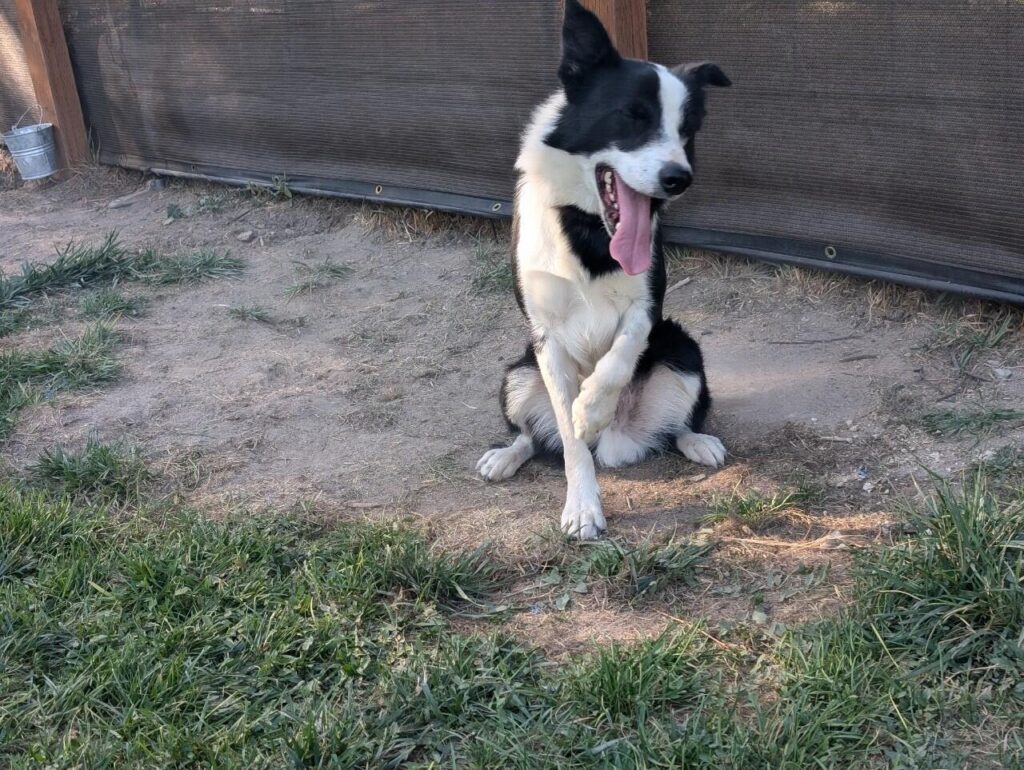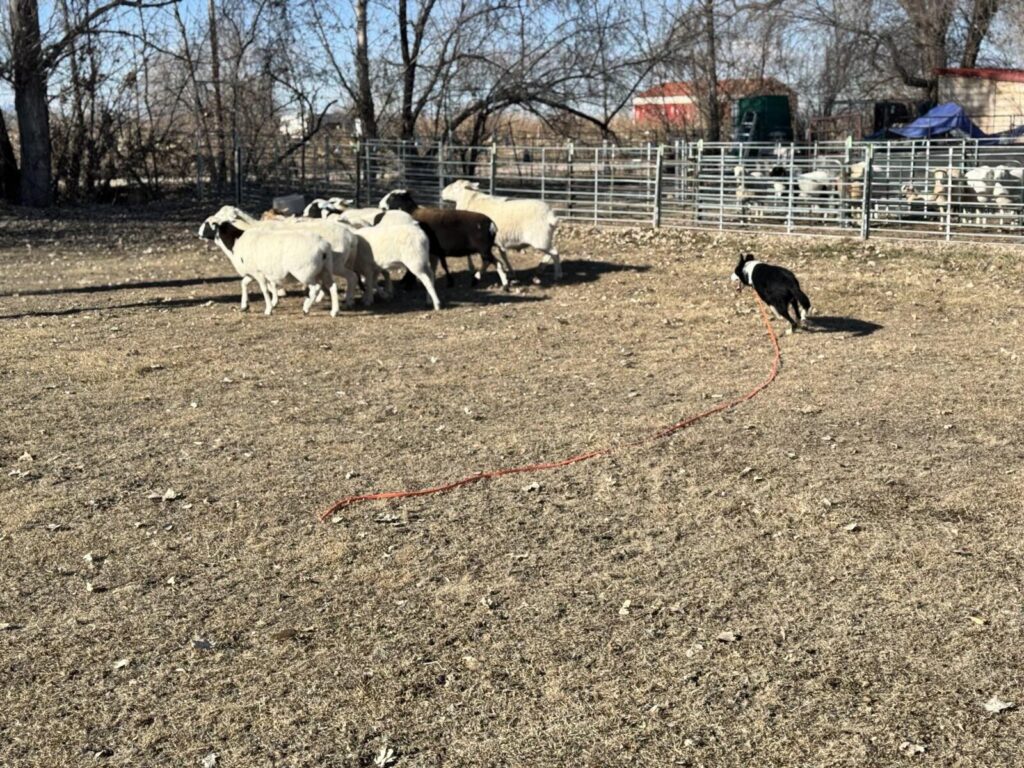“Monkey” is a 3 year old intact Border Collie I’ve had for almost a year. He’s a really nice little dog, about 20″ at the withers and no more than 40 lbs from cow dog working lines. I picked him up as a foster, but I found myself partial toward him, especially after I saw him work sheep for the first time. I decided to keep him so that we could pursue an introduction to the world of sheepdogging, a discipline of dog training I am totally green to, and for the past 10 months I’ve been learning to work him with the help of a pro trainer.

While I’ve participated in dog sports before, Monkey is my first proper “sport” dog in the sense that my primary goal with him is to participate and compete in sport. I’m not a livestock herder so it would be incorrect to call Monkey a “working dog,” a controversial term claimed by some sport (protection) handlers, and although he lives in the house with me and accompanies me about my daily work as an all breed dog obedience instructor, I have no intention of training and employing him as an obedience competition or demonstration dog. You might think of him as a “companion dog,” though there are good reasons why I hesitate to make the appellation.
Companion dog training is associated with formal obedience standards as regulated, published, and evaluated by the major breed registries (AKC, UKC, CKC, FCI, etc). These standards describe the type of obedience expected of a dog trained for companionship – heeling on/off leash, staying for examination by a judge, recalling to a position in front of the handler, and holding long sit or down stays. In order to pass a companion dog test, dogs need to be able to demonstrate precision and control on these exercises regardless of the environment and distractions ringside.
In the tradition of obedience training I practice, companion dogs are trained with an objective of situational response; we encourage the dog to interpret distractions in his environment like prey, threats, or members of his social scene, as competing motivators that activate greater levels of commitment to a working task when the dog displaces the instinctive tensions he feels, seeking their relaxation through engagement with the handler. However, as my friend and dog training mentor Tony Ancheta advised me, with dogs who are expected to work a task for which they’ve been specifically bred, it would be folly to cloud the dog’s genetic predisposition by giving them an avenue to displace instinctive drives, and the goal of obedience training for such dogs should only be to empower the owner to keep and transport the dog safely between opportunities for work.

Spooked by tales about obedience trained sheepdogs ending up too dependent on their handler or worse, meeting unfortunate ends beneath the wheels of tractors or the hooves of stampedes, I was hesitant to start Monkey’s obedience training, but at the encouragement of my sheepdog trainer (who says Monkey could benefit from a little more steadiness) and with Tony’s expert advice, I’ve started him on a training plan with the goal keeping to a sub-novice standard of obedience on the level of verbal command-response. In addition to a loose Heel, Sit, Stay, and Recall, I’ll also add the Stand, Place (wrong-side Heel), and Hold/Carry. What I probably won’t be doing is a lot of proofing the exercises for situational response around prey. I might not even add the Auto-Sit (we’ll see).
Mostly, I’m seeking to gain a little bit more authority with Monkey, who despite being extremely eager to please, has a tendency to think he’s in trouble when I try to redirect him from something he’s sure he was supposed to be doing. For example, this morning when Hannah was leaving with her dogs, Monkey was positive he was going out to the yard and was excitedly prancing around in the foyer. It took me several attempts to call him back into the main section of the house, and when he finally came he slunk back in and went around the corner of a doorway, peeking with only one eye around. I didn’t say a harsh word at all to him, he’s just super soft and extremely handler-oriented. We do a lot of outings in the awesome wildernesses of Utah and the surrounding states that I’ll be bringing Monkey on, so to allow him to have the best life he can live at liberty in those environments I need him to understand that guidance, redirection, and sometimes correction is normal and that he needn’t worry so much about making mistakes.
Anyway, my process of training this dog may be of interest to the reader, so I’ll be filming and posting our training sessions here for you to follow along. In this first session, I’ve taken Monkey to a nearby park where there’s always sure to be action, and equipped him with a 15′ longe line. My goal here is simply to evaluate his reactions to the type of environmental stressors that might be present in and around a sheepdog trial: children running and screaming, loud music, crowds of people, and other dogs playing. We’re just taking a nice walk through this environment with one rule: Pulling Gets You Nowhere. A couple times in the video he gets a little stressed out by the crowd of people at the pavilion and the game of fetch he isn’t invited to, but I don’t permit him the relief he’s seeking until he’s able to respect the slack in the longe. All I care about in this session is that he understands his limitations and starts to recognize that he’s in control of his own state of tension/relaxation.
If you’re interested in following along, you can enter your address into my newsletter form below, I’ll be writing these updates to both the AMPSK9 blog and my Pack Howl newsletter.
Join the AMPSK9 Pack Howl
